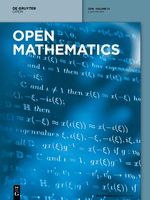
Dissertationes Mathematicae
Scope & Guideline
Where Innovation Meets Theory.
Introduction
Aims and Scopes
- Advanced Functional Analysis:
The journal frequently publishes papers that delve into functional analysis, exploring concepts such as Banach spaces, operator theory, and semigroups, which are fundamental in understanding various mathematical structures. - Stochastic Processes and Differential Equations:
A significant portion of the research focuses on stochastic processes and differential equations, particularly in relation to boundary conditions and parabolic equations, highlighting the interplay between stochastic analysis and partial differential equations. - Algebraic Structures and Group Theory:
The journal emphasizes research on algebraic structures, including group theory and its applications, showcasing papers that address topics such as graph products of groups and homomorphisms. - Geometric and Topological Analysis:
Papers often explore geometric and topological aspects of mathematics, including studies on homotopical properties and the topology of function spaces, indicating a robust interest in the geometry of mathematical objects. - Harmonic Analysis and Operator Theory:
Research on harmonic analysis, particularly in relation to graphs and operator theory, is a notable focus, reflecting the journal's commitment to addressing complex analytical techniques and their applications.
Trending and Emerging
- Interdisciplinary Applications of Mathematics:
There is a notable trend towards applying mathematical theories to interdisciplinary fields, such as quantum hypergraph homomorphisms and their implications in non-local games, indicating an increasing interest in the interaction between mathematics and other scientific domains. - Nonlocal Operators and Stochastic Processes:
Recent papers have increasingly addressed nonlocal operators and their applications in stochastic processes, showcasing a growing interest in advanced mathematical tools that extend traditional local analysis. - Advanced Operator Theory:
The exploration of sophisticated operator theories, including CP-semigroups and dilations, reflects a trend towards deeper investigations into the structure and behavior of operators in various mathematical contexts. - Topological Dynamics and Colorings:
The rise of research on topological dynamics, particularly continuous colorings, signifies a growing interest in the interplay between topology and dynamics, suggesting an expanding frontier in mathematical exploration.
Declining or Waning
- Classical Limit Theorems:
While limit theorems have traditionally been a staple in probability theory, recent publications indicate a waning interest in classical and almost sure local limit theorems, suggesting a potential shift towards more complex probabilistic frameworks. - Basic Theoretical Constructs:
The foundational aspects of mathematical theories, such as basic theory in generalized functions, seem to be receiving less attention, perhaps as researchers focus on more applied or advanced theoretical constructs. - Discrete Systems and Symplectic Geometry:
Research on discrete symplectic systems and related topics has decreased, indicating a potential shift in focus towards continuous systems or other areas of applied mathematics. - Elementary Algebraic Concepts:
There seems to be a decline in papers focused solely on elementary algebraic concepts, as the journal increasingly gravitates towards more sophisticated algebraic structures and their applications.
Similar Journals

Hokkaido Mathematical Journal
Advancing mathematical frontiers through rigorous research.Hokkaido Mathematical Journal, published by Hokkaido University, Department of Mathematics, stands as a pivotal platform for scholarly discourse in the field of mathematics. Established in 1972, this peer-reviewed journal has consistently contributed to the advancement of mathematical research, covering a wide spectrum of topics within the discipline. With its current ranking in the third quartile (Q3) among miscellaneous mathematics journals, it offers valuable insights and findings that cater to both established researchers and budding mathematicians alike. The journal is accessible through traditional subscription, fostering a community that values rigorous theoretical exploration and applied mathematical methods. As it approaches its convergence year in 2024, Hokkaido Mathematical Journal remains essential for those dedicated to pushing the boundaries of mathematical knowledge and innovation in Japan and beyond.

PUBLICATIONS OF THE RESEARCH INSTITUTE FOR MATHEMATICAL SCIENCES
Elevating Research in Mathematical SciencesPublications of the Research Institute for Mathematical Sciences, ISSN: 0034-5318, E-ISSN: 1663-4926, is a distinguished academic journal published by the European Mathematical Society. Since its inception in 1969, this journal has emerged as a pivotal platform for disseminating high-quality research in the field of mathematics, achieving a notable position in the top quartile (Q1) of the Mathematics (miscellaneous) category as of 2023. With a current Scopus Rank of #121 out of 399, placing it within the 69th percentile for general mathematics, the journal serves as an essential resource for researchers, professionals, and students alike. It aims to foster the advancement of mathematical science through innovative research and comprehensive studies that encourage scholarly dialogue and collaboration. While access options may vary, the journal remains committed to enhancing the visibility and impact of mathematics research on a global scale. Based in Germany, at the Technische Universität Berlin, it continues to uphold a legacy of academic excellence and rigor in mathematical inquiry.

Open Mathematics
Connecting Ideas, Cultivating Knowledge in MathematicsOpen Mathematics, published by DE GRUYTER POLAND SP Z O O, is a prominent peer-reviewed journal that has been a vital platform for disseminating innovative research in the field of mathematics since its inception in 2015. With an impressive impact factor reflected by its Q2 ranking in the miscellaneous mathematics category and a commendable Scopus rank of #91 out of 399, it positions itself as a significant contributor to the mathematical community. This open access journal, headquartered in Poland, welcomes submissions that tackle diverse mathematical theories, applications, and methodologies, fostering knowledge exchange among researchers, professionals, and students globally. Since its launch, Open Mathematics has focused on bridging the gap between theoretical advancement and practical applications, making it an essential resource for anyone seeking to stay at the forefront of mathematical research and innovation. The journal offers easy online access, enhancing the visibility and impact of the valuable work published within its pages.

Russian Mathematics
Elevating Mathematical Knowledge through Rigorous ScholarshipRussian Mathematics is an esteemed journal published by PLEIADES PUBLISHING INC, specializing in the field of mathematics. With its ISSN 1066-369X and E-ISSN 1934-810X, this journal serves as a vital platform for disseminating innovative research and advancements in various branches of mathematics. Established in 1992, it has earned its place in the Q2 category of the mathematics (miscellaneous) discipline, reflecting its growing influence and reputation within the academic community. Although it is not an open-access journal, its rigorous selection process ensures that only high-quality research is published, making it an invaluable resource for researchers, professionals, and students seeking in-depth insights into mathematical theories and applications. The journal has documented its evolution through a converged years format from 2010 to 2024, emphasizing its commitment to fostering scholarly discourse. With its address located at PLEIADES HOUSE, 7 W 54 ST, NEW YORK, NY 10019, UNITED STATES, Russian Mathematics is poised to contribute significantly to the global mathematical community.

Quaestiones Mathematicae
Fostering Scholarly Dialogue in MathematicsQuaestiones Mathematicae is a distinguished academic journal dedicated to the field of mathematics, published by Taylor & Francis Ltd, a renowned name in scholarly publishing. Established in 1976, this journal has been a critical resource for researchers, professionals, and students alike, providing a platform for innovative and rigorous advancements in miscellaneous mathematics. The journal holds a 2023 Scopus rank of 35 out of 90 in its category, reflecting its significant contribution to the field with a 61st percentile standing, and whilst it is categorized in the Q3 quartile, it remains an essential avenue for sharing pivotal mathematical research. Although not open access, Quaestiones Mathematicae offers a rich archive of acclaimed papers, encouraging scholarly dialogue and fostering the growth of mathematical knowledge. With a converged span extending to 2024, it continues to evolve and adapt, ensuring its relevance and impact within the global academic community.

St Petersburg Mathematical Journal
Advancing Mathematical Frontiers with Every IssueSt Petersburg Mathematical Journal, published by the American Mathematical Society, is a distinguished platform that fosters research and discourse in the fields of mathematics, specifically focusing on Algebra and Number Theory, Analysis, and Applied Mathematics. With an ISSN of 1061-0022 and an E-ISSN of 1547-7371, this journal has been a reliable source of cutting-edge mathematical research since its inception in 2003 and continues to publish high-quality content through 2024. Although not open-access, it offers valuable insights and advances the mathematical community's understanding, as indicated by its respectable impact factor and Scopus rankings across various categories—landing in the Q3 quartile across three significant mathematical disciplines. Researchers, professionals, and students are encouraged to contribute and engage with this journal, as it remains a vital resource for promoting collaboration and discovery within the ever-evolving field of mathematics.

JOURNAL OF THE EUROPEAN MATHEMATICAL SOCIETY
Nurturing a Global Community of MathematiciansThe JOURNAL OF THE EUROPEAN MATHEMATICAL SOCIETY, published by the EUROPEAN MATHEMATICAL SOCIETY (EMS), stands as a premier platform in the field of mathematics, known for its rigorous editorial standards and impactful contributions to both applied and theoretical aspects of the discipline. With a commendable Q1 ranking in both Applied Mathematics and Miscellaneous Mathematics categories, alongside a Scopus rank of 32 out of 399 in General Mathematics, this journal has established itself as a crucial resource for researchers and professionals. Since achieving Open Access status in 2021, it has expanded its reach, making cutting-edge research more accessible to a global audience. With a publication horizon extending from 2002 to 2024 and a dedicated focus on high-quality mathematical scholarship, the journal continues to foster innovation and collaboration within the mathematical community.

Moscow University Mathematics Bulletin
Illuminating the Path of Mathematical ExplorationMoscow University Mathematics Bulletin is a distinguished academic journal published by Springer International Publishing AG, focusing on the dynamic field of mathematics. With an ISSN of 0027-1322 and an E-ISSN of 1934-8444, this journal serves as a platform for innovative research and developments in various mathematics sub-disciplines, making significant contributions to both theoretical and applied mathematics. While it holds a Q3 ranking in the field of Mathematics (miscellaneous) for 2023, this journal remains dedicated to fostering academic discourse among mathematicians. Researchers, professionals, and students will find value in the diverse range of articles that embody rigor and creativity. Although currently not an Open Access publication, the journal provides numerous access options through institutional or personal subscriptions. From its inception in 2007 to its expected continuity until 2024, the Moscow University Mathematics Bulletin is committed to enhancing the understanding and appreciation of mathematical sciences.

Pure and Applied Mathematics Quarterly
Shaping the Future of Mathematics with Every IssuePure and Applied Mathematics Quarterly is a prestigious journal published by INT PRESS BOSTON, INC, focusing on the diverse and evolving field of mathematics. Since its inception in 2007, this journal has grown significantly, currently holding a Q1 ranking in the Mathematics (Miscellaneous) category for 2023, positioning it among the leading publications in the discipline. With a commitment to publishing high-quality research, Pure and Applied Mathematics Quarterly fosters innovation and dialogue within the mathematical community by providing a platform for theoretical advancements and practical applications. The journal remains accessible to researchers and professionals through its ISSN 1558-8599 and E-ISSN 1558-8602, although it does not currently offer open access. As a vital resource for mathematicians, educators, and students, this journal endeavors to expand the frontiers of mathematical knowledge and contribute to the academic dialogue surrounding this fundamental science.

Journal of Analysis
Connecting Researchers Through Mathematical DiscourseThe Journal of Analysis, published by SPRINGERNATURE, serves as a crucial platform for disseminating advanced research in the fields of mathematics, particularly focusing on Algebra, Number Theory, Analysis, Applied Mathematics, Geometry, Topology, and Numerical Analysis. Since its inception in 2016, this journal has aimed to foster knowledge-sharing and innovation among researchers, professionals, and students. Boasting a diverse scope and a commitment to high-quality research, the journal is indexed in various categories with rankings that reflect its growing influence, particularly in Algebra and Number Theory (Q4), Analysis (Q3), and Applied Mathematics (Q3), among others. With an ISSN of 0971-3611 and E-ISSN of 2367-2501, it offers insightful articles that contribute to the ongoing discourse in mathematics. The journal is located in Germany, ensuring a European perspective while also welcoming global contributions. Researchers seeking to enhance their understanding and impact in their respective fields will find this journal an invaluable resource.